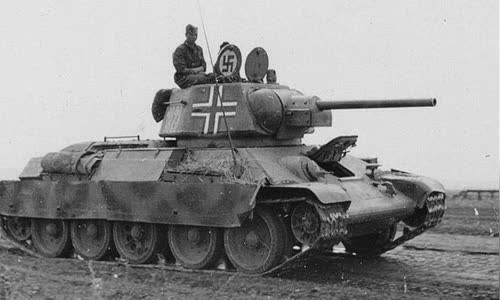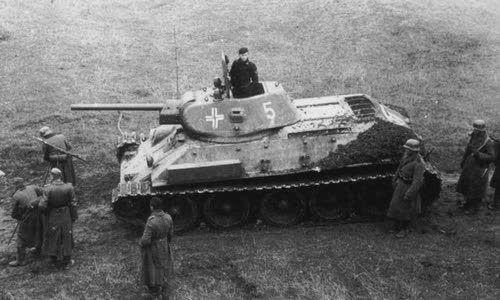General Johannes Friesner was impressed by the German fascist with the T-34 Middle Tank to the extent that continued to use many obtained.
T-34 is considered to be the best tanks of the Soviet Union during World War II thanks to strong firepower, high survival and good mobility.

Photo: Bundesarchiv
T-34 tanks are reliable on all terrain, can operate in places where we think it is impossible.
T-34/76 tanks in the German military payroll.
This is the reason for the fascist Germany to make the most of this tank.
The T-34/76 equipped with a 76 mm-sized cannon appeared for the first time in the German military payroll in the summer of 1941. They were identified as PZ.KPFW T-34-747 (R), in which pz
Germany has about 300 such cars during World War II.
The serious shortage of ammunition and spare parts makes Germany difficult to maintain a full-availability of the entire Soviet tanks.
In order to prevent the air for air and German aircraft fired mistakenly, the iron cross sign of the Nazi army was painted on the body or turret the pz.kpfw T-34-747 (R).
Germany not only uses T-34 as a traditional tank role.

Photo: Bundesarchiv
The SS force is the unit using many of the most Soviet tanks, especially SS CARS SS Number 2 Das Reich.
The SS force took advantage of the infrastructure of the Kharkov tractor factory to restore activities for dozens of tanks, then established a private company directly under the number 2. This is also a lot of ownership units
A total of 25 pieces were payrolled and added 12 other units transferred to Kinschlag SS Panzer-grenadier, where training collaboration against Germany.
T-34/76 tanks in the German military payroll.
The tanks in the SS Tank Division No. 2 joined the match Kursk in the summer of 1943. At that time, T-34/76 tanks were obsolete in terms of technically, the Germans used them as weapons
The most prominent among German soldiers using T-34 tanks is Joseph Naber, the 9th Abremor of the 9th Age of the Division of SS No. 2 and Head of Emil Seibold with the unit.
After the match Kursk, T-34/76 tanks gradually disappeared from German forces.
In 1944, the Red Soviet Union put into operation the more modern T-34-85 variant and equipped with a 85 mm-sized gun.



 Tara Muşîr Hormzyar
Tara Muşîr Hormzyar







